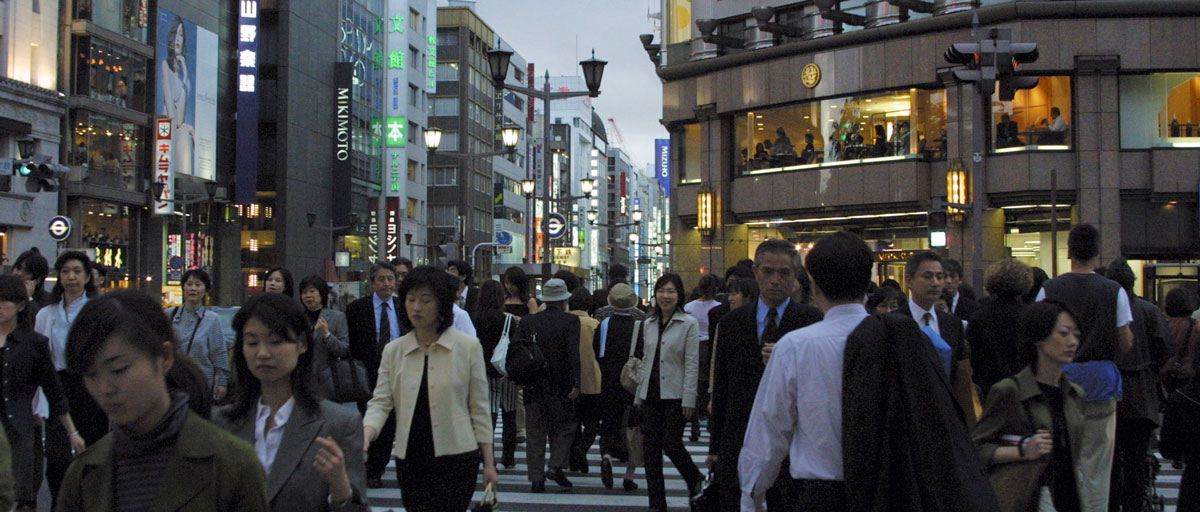Explaining core concepts
What is resilience?

Resilience starts from the belief that humans and nature are strongly coupled to the point that they should be conceived as one social-ecological system. Photo: T. Svensson/Azote
- Resilience starts from the belief that humans and nature are strongly coupled
- Rapid human development is pushing our planet dangerously close to its boundaries
- Overall, economic, and technological solutions must become more ecologically literate
An introduction to a popular yet often misunderstood concept
Over the past decades, few concepts have gained such prominence as resilience. There has been an explosion of research and policies into ways to promote resilient systems, but the content has often lacked a clear definition of what resilience actually means, let alone how to apply resilience thinking.
Let us try and explain.
Resilience is the capacity of a system, be it an individual, a forest, a city or an economy, to deal with change and continue to develop. It is about how humans and nature can use shocks and disturbances like a financial crisis or climate change to spur renewal and innovative thinking.
Humans and nature are strongly coupled
Resilience starts from the belief that humans and nature are strongly coupled to the point that they should be conceived as one social-ecological system. This means that in our globalized society, there are virtually no ecosystems that are not shaped by people and no people without the need for ecosystems and the services they provide.
The problem is that too many of us seem to have disconnected ourselves from nature and forgotten that our economies and societies are fundamentally integrated with the planet. Resilience is therefore an attempt to create a new understanding of how humans and nature interact, adapt and impact each other amid change. That is why we argue there is a need to reconnect to the biosphere, that sphere that embraces all air, water and land on the planet in which all life is found.
There is no doubt humans have been successful in modifying the planet to meet the demands of a rapidly growing population. But the gains achieved by this spectacular re-engineering have come at a price. It is now wide apparent and acknowledged that humanity’s use of the biosphere, is not sustainable.
Resilience thinking is about generating increased knowledge about how we can strengthen the capacity to deal with the stresses caused by environmental change. It is about finding ways to deal with unexpected events and crises and identifying sustainable ways for humans to live within the Earth’s boundaries.
Three pillars within resilience thinking
Within resilience thinking, there are three major strands from which all research and conceptual thinking departs. The first has already been mentioned before, namely that there are complex interdependencies between people and ecosystems.
In spite of immense technological development and progress, our economies and societies still fundamentally depend on ecosystems to provide us with a hospitable climate, clean water, food, fibres and numerous other goods and services.
The second is a historical aspect and describes the tremendous acceleration of human development over the past 200 years, particularly since World War II. This acceleration is pushing our planet dangerously close to its boundaries, to the extent that abrupt environmental change cannot be excluded. Furthermore, it has led scientists to argue that we have entered a new geological era called the Anthropocene, or Age of Human, where humanity is influencing every aspect of the Earth on a scale akin to the great forces of nature.
The third strand highlights the fascinating paradox that the innovative capacity that has put us in the current environmental predicament can also be used to push us out of it. Resilience thinking embraces learning, diversity and how to adapt to a wide range of complex challenges. It introduces the term social-ecological thinking which essentially strives to find innovative ways to reconnect with the biosphere and stay within planetary boundaries.
Planetary boundaries
One of the most significant attempts to provide scientific guidelines for improved stewardship of the planet is the planetary boundaries concept. It was first presented in 2009 by a group of 28 renowned international scientists. They argued that if humanity stays within these nine boundaries we can continue to develop and thrive for generations to come. Crossing them could generate abrupt or irreversible environmental changes. In 2015, an updated version was presented. The new study warned that four of nine planetary boundaries have been crossed as a result of human activity: climate change, loss of biosphere integrity, land-system change, altered biogeochemical cycles (phosphorus and nitrogen). Two of these, climate change and biosphere integrity, are what the scientists call "core boundaries". Significantly altering either of these "core boundaries" would drive the Earth System into a new state.
The concept has been criticized for not being well adapted to policy although it was first and foremost designed to advance Earth System science. However, it can be used as a framework to guide the formulation of new Sustainable Development Goals, which are to replace the Millennium Development Goals after 2015.
The nine planetary boundaries are climate change, stratospheric ozone, ocean acidification, nitrogen and phosphorus cycles, biodiversity loss, land use change and freshwater use. According to scientists three of them – climate change, nitrogen cycle and biodiversity loss - have already been transgressed. Several others are in the danger zone.
An ecologically literate future
Overall, economic, and technological solutions must become more ecologically literate and see the numerous possibilities in investing in sustainable use of ecosystems and their services. An immense number of sustainability initiatives are emerging, such as transition towns, agroecological farming and ecosystem-based fisheries management. Such initiatives need to be scaled up through innovation funds, seed money and other incentives in order to have a global impact.
We need innovations that can increase human well-being and at the same time enhance the capacity of ecosystems to produce services.
That is what social-ecological innovation is all about and that is what resilience thinking tries to encourage.
READ MORE
Read more about resilience here
Resilience Alliance's take on resilience
SCIENTIFIC ARTICLES
Folke, C., Jansson, Å., Rockström, J., Olsson, P., Carpenter, S., Chapin, F., Crépin, A.S., Daily, G., Danell, K., Ebbesson, J., Elmqvist, T., Galaz, V., Moberg, F., Nilsson, M., Österblom, H., Ostrom, E., Persson, Å., Peterson, G., Polasky, S., Steffen, W., Walker, B., Westley, F. (2011) Reconnecting to the Biosphere. AMBIO, 0044-7447. Doi: 10.1007/s13280-011-0184-y
Will Steffen, Åsa Persson, Lisa Deutsch, Jan Zalasiewicz, Mark Williams, Katherine Richardson, Carole Crumley, Paul Crutzen, Carl Folke and Line Gordon, et al. 2011. The Anthropocene: From Global Change to Planetary Stewardship. Ambio 0044-7447. Doi: 10.1007/s13280-011-0185-x.
Westley, F., Olsson, P., Folke, C., Homer-Dixon, T., Vredenburg, H., Loorbach, D. Thompson, J., Nilsson, M., Lambin, E., Sendzimir, J., Banerjee, B., Galaz, V., van der Leeuw, S. 2011. Tipping Toward Sustainability: Emerging Pathways of Transformation. In AMBIO, Vol. 40, Issue 7. Doi: 10.1007/s13280-011-0186-9
Liu, J., T. Dietz, S.R. Carpenter, M. Alberti, C. Folke, E. Moran, A.C. Pell, P. Deadman, T. Kratz, J. Lubchenco, E. Ostrom, Z. Ouyang, W. Provencher, C.L. Redman, S.H. Schneider, W.W. Taylor. 2007. Complexity of Coupled Human and Natural Systems. Science 317:1513-1516
Rockström, J., Steffen, W., Noone, K., Persson, Å., Chapin, III, F.S., Lambin, E., Lenton, T.M., Scheffer, M., Folke, C., Schellnhuber, H., Nykvist, B., De Wit, C.A., Hughes, T., van der Leeuw, S., Rodhe, H., Sörlin, S., Snyder, P.K., Costanza, R., Svedin, U., Falkenmark, M., Karlberg, L., Corell, R.W., Fabry, V.J., Hansen, J., Walker, B.H., Liverman, D., Richardson, K., Crutzen, C., Foley. J. (2009). A safe operating space for humanity. Nature 461: 472-475 DOI 10.1038/461472a
Biggs, R., Carpenter, S.R., Brock, W.A. (2009) Turning back from the brink: Detecting an impending regime shift in time to avert it. Proceedings of the National Academy of Sciences (PNAS) 106: 826-831









